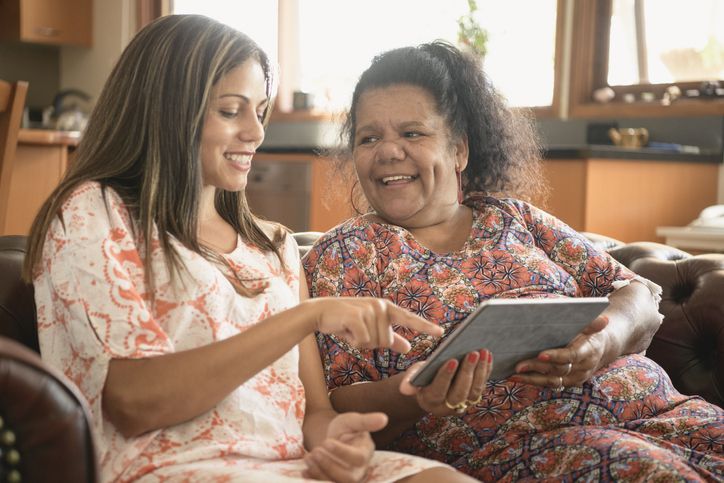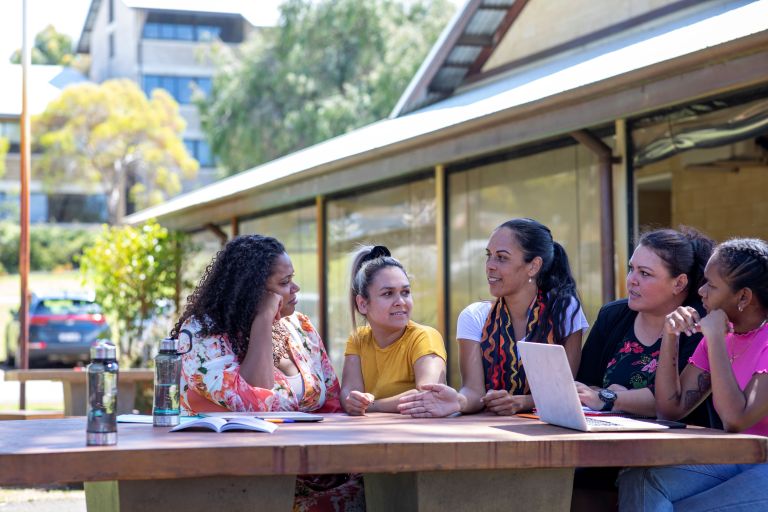Hi, my name is Peter Jensen. I’m a qualified firefighter here at Campbelltown. I’m also a proud Aboriginal man from Far North Queensland. I’m a Tjungundji man from right up the top of Australia. I was born and bred up on the Atherton Tablelands.
When I was a young person, I’d never seen an Aboriginal firefighter. A fire truck used to come to the school and out of the fire truck, all white Anglo-Saxon men would come, so it wasn’t in my mind that Aboriginal men could actually be firefighters.
I’ve always been interested in working in the community. Previously, I worked in juvenile justice and for Family and Community Services. I worked at TAFE New South Wales.
A friend of mine that was working in the fire brigade came and saw me and he told me about a program that was starting up called IFARES and said that they could give us support. Twelve months later, I became a qualified firefighter.
Being an Aboriginal firefighter is really important, especially with the responsibility of role modelling within our communities. My son and my daughter both want to be firefighters now. And so we've started to lay the platform for Aboriginal people seeing it as a possible career option.
I remember the first time I jumped into the truck, and we’re driving out, the sirens going, your adrenaline starts to pump and your heart rate gets up, and you get a bit frazzled by it. But the more you work in the job, the more you become settled in the role, and the expectation from the community and what you can provide to them.
Now going out to a house fire is unfortunate for the people involved - But as a firefighter, there's nothing better to do than to get your hands dirty.
Initially I was stationed at 10 station in the city, Redfern, I know Aboriginal families from all around NSW bringing their children to 10 station which is Redfern, and they would beep their horn and I would walk to the window, and I would wave at them, and I would run downstairs and invite some of the children in to jump through the truck.
So having those connections, those streamlined connections through culture and identity with our community is super important to make sure that our communities are kept safe.
I work out here at Campbelltown at the moment. We're a pretty busy station. We do a lot of house fires. We do a couple of building fires here and there. We also do a lot of car accidents, a lot of pet and domestic rescue. We do a lot of assist ambulance.
It's great being out at Campbelltown, developing and working on my skills.
Here at Campelltown we have four Aboriginal firefighters. The Campbelltown area has a high population of Aboriginal people. We get to go out into our schools to teach fire ed. We go out to Aboriginal primary schools and talk about fire safety and also engaging with them, and hopefully they grow up to want to be firefighters also.
We've got the IFARES program still up and running, but we're also looking to pick up retained firefighters from all over country and rural New South Wales - so people in Walgett, Burke, and Brewarrina. We have an opportunity there to pick up some deadly Black fella firefighters to join the ranks.
I’ve been a firefighter with Fire and Rescue New South Wales for five years. The journey has been amazing. I’ve had a couple of opportunities to save a couple of animals. A number of times, we’ve saved a number of people. We’re doing our patrols and engaging with the community. I still love my job, I see it as a career for the rest of my life. In 10 years time, I'm probably going to move out of the fire station and hopefully into the college or into a role with Fire and Rescue, more in the community side of things. [Ends]

